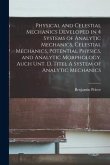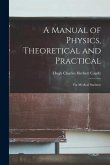- Broschiertes Buch
- Merkliste
- Auf die Merkliste
- Bewerten Bewerten
- Teilen
- Produkt teilen
- Produkterinnerung
- Produkterinnerung
Adopting a fresh approach to physics that builds a conceptual framework as motivation for the physical principles, problem solving coverage, end-of-chapter material, and media support, this work aims to address market needs with the best tools available.
Andere Kunden interessierten sich auch für
![Statistical Plasma Physics, Volume II Statistical Plasma Physics, Volume II]() Setsuo IchimaruStatistical Plasma Physics, Volume II76,99 €
Setsuo IchimaruStatistical Plasma Physics, Volume II76,99 €![Elements of Physics, or Natural Philosophy [electronic Resource]: Written for General Use, in Plain or Non-technical Language; 2 Elements of Physics, or Natural Philosophy [electronic Resource]: Written for General Use, in Plain or Non-technical Language; 2]() Neil ArnottElements of Physics, or Natural Philosophy [electronic Resource]: Written for General Use, in Plain or Non-technical Language; 225,99 €
Neil ArnottElements of Physics, or Natural Philosophy [electronic Resource]: Written for General Use, in Plain or Non-technical Language; 225,99 €![A Natural Philosophy: Embracing the Most Recent Discoveries in the Various Branches Of Physics, and Exhibiting the Application Of Scientific A Natural Philosophy: Embracing the Most Recent Discoveries in the Various Branches Of Physics, and Exhibiting the Application Of Scientific]() George Payn QuackenbosA Natural Philosophy: Embracing the Most Recent Discoveries in the Various Branches Of Physics, and Exhibiting the Application Of Scientific30,99 €
George Payn QuackenbosA Natural Philosophy: Embracing the Most Recent Discoveries in the Various Branches Of Physics, and Exhibiting the Application Of Scientific30,99 €![Statistical Plasma Physics, Volume I Statistical Plasma Physics, Volume I]() Setsuo IchimaruStatistical Plasma Physics, Volume I76,99 €
Setsuo IchimaruStatistical Plasma Physics, Volume I76,99 €![Natural Philosophy [microform]: Part II, Being a Hand-book of Chemical Physics, or, The Physics of Heat, Light and Electricity Natural Philosophy [microform]: Part II, Being a Hand-book of Chemical Physics, or, The Physics of Heat, Light and Electricity]() John Herbert SangsterNatural Philosophy [microform]: Part II, Being a Hand-book of Chemical Physics, or, The Physics of Heat, Light and Electricity22,99 €
John Herbert SangsterNatural Philosophy [microform]: Part II, Being a Hand-book of Chemical Physics, or, The Physics of Heat, Light and Electricity22,99 €![Physical and Celestial Mechanics Developed in 4 Systems of Analytic Mechanics, Celestial Mechanics, Potential Physics, and Analytic Morphology. Auch U Physical and Celestial Mechanics Developed in 4 Systems of Analytic Mechanics, Celestial Mechanics, Potential Physics, and Analytic Morphology. Auch U]() Physical and Celestial Mechanics Developed in 4 Systems of Analytic Mechanics, Celestial Mechanics, Potential Physics, and Analytic Morphology. Auch U32,99 €
Physical and Celestial Mechanics Developed in 4 Systems of Analytic Mechanics, Celestial Mechanics, Potential Physics, and Analytic Morphology. Auch U32,99 €![A Manual of Physics, Theoretical and Practical: for Medical Students A Manual of Physics, Theoretical and Practical: for Medical Students]() A Manual of Physics, Theoretical and Practical: for Medical Students30,99 €
A Manual of Physics, Theoretical and Practical: for Medical Students30,99 €-
-
-
Adopting a fresh approach to physics that builds a conceptual framework as motivation for the physical principles, problem solving coverage, end-of-chapter material, and media support, this work aims to address market needs with the best tools available.
Hinweis: Dieser Artikel kann nur an eine deutsche Lieferadresse ausgeliefert werden.
Hinweis: Dieser Artikel kann nur an eine deutsche Lieferadresse ausgeliefert werden.
Produktdetails
- Produktdetails
- Verlag: McGraw Hill LLC
- Seitenzahl: 624
- Erscheinungstermin: Dezember 2002
- Englisch
- Abmessung: 273mm x 215mm x 19mm
- Gewicht: 1270g
- ISBN-13: 9780072875607
- ISBN-10: 0072875607
- Artikelnr.: 21293638
- Herstellerkennzeichnung
- Libri GmbH
- Europaallee 1
- 36244 Bad Hersfeld
- gpsr@libri.de
- Verlag: McGraw Hill LLC
- Seitenzahl: 624
- Erscheinungstermin: Dezember 2002
- Englisch
- Abmessung: 273mm x 215mm x 19mm
- Gewicht: 1270g
- ISBN-13: 9780072875607
- ISBN-10: 0072875607
- Artikelnr.: 21293638
- Herstellerkennzeichnung
- Libri GmbH
- Europaallee 1
- 36244 Bad Hersfeld
- gpsr@libri.de
Chapter 1: Introduction 1.1 Why study physics? 1.2 Talking physics 1.3 The use of mathematics 1.4 Scientific notation and significant figures 1.5 Units 1.6 Dimensional analysis 1.7 Problem-solving techniques 1.8 Approximations 1.9 Graphs PART ONE: MECHANICS Chapter 2: Forces and Introduction to Vectors 2.1 Forces 2.2 Fundamental forces 2.3 Newton's laws of motion 2.4 Net force: vector addition 2.5 Gravitational forces 2.6 Contact forces 2.7 Tension Chapter 3: Forces and Motion along a Line 3.1 Position and displacement 3.2 Velocity 3.3 Acceleration 3.4 Newton
s second law: force and acceleration 3.5 Motion with constant acceleration 3.6 Falling objects 3.7 Apparent weight Chapter 4: Forces and Motion in Two Dimensions 4.1 Addition and subtraction of vectors in two dimensions 4.2 Components of vectors in two dimensions 4.3 Equilibrium 4.4 Velocity and acceleration 4.5 Motion of projectiles 4.6 Other examples of constant acceleration 4.7 Relative velocity Chapter 5: Circular Motion 5.1 Description of uniform circular motion 5.2 Centripetal acceleration 5.3 Banked curves 5.4 Circular orbits 5.5 Nonuniform circular motion 5.6 Angular acceleration 5.7 Artificial gravity Chapter 6: Energy 6.1 A conservation law 6.2 Work done by constant forces 6.3 Kinetic energy 6.4 Work done by variable forces 6.5 Potential energy 6.6 Conservation of mechanical energy 6.7 General law of energy conservation 6.8 Power Chapter 7: Linear Momentum 7.1 A vector conservation law 7.2 Momentum 7.3 The impulse-momentum theorem 7.4 Conservation of momentum 7.5 Center of mass 7.6 Motion of the center of mass 7.7 Collisions in one dimension 7.8 Collisions in two dimensions Chapter 8: Torque and Angular Momentum 8.1 Rotational kinetic energy and rotational inertia 8.2 Torque 8.3 Work done by a torque 8.4 Equilibrium revisited 8.5 Equilibrium in the human body 8.6 Rotational form of Newton
s second law 8.7 The dynamics of rolling objects 8.8 Angular momentum 8.9 The vector nature of angular momentum Chapter 9: Fluids 9.1 States of matter 9.2 Pressure 9.3 Pascal's principle 9.4 The effect of gravity on fluid pressure 9.5 Measuring pressure 9.6 Archimedes' principle 9.7 Fluid flow 9.8 Bernoulli's equation 9.9 Viscosity 9.10 Viscous drag 9.11 Surface tension Chapter 10: Elasticity and Oscillations 10.1 Elastic deformations of solids 10.2 Hooke's law for tensile and compressive forces 10.3 Beyond Hooke's law 10.4 Shear and volume deformations 10.5 Simple harmonic motion 10.6 The period and frequency for SHM 10.7 Graphical analysis of SHM 10.8 The pendulum 10.9 Damped oscillations 10.10 Forced oscillations and resonance Chapter 11: Waves 11.1 Waves and energy transport 11.2 Transverse and longitudinal waves 11.3 Speed of transverse waves on a string 11.4 Periodic waves 11.5 Mathematical description of a wave 11.6 Graphing waves 11.7 Principle of superposition 11.8 Reflection and refraction 11.9 Interference and diffraction 11.10 Standing waves Chapter 12: Sound 12.1 Sound waves 12.2 The speed of sound waves 12.3 Amplitude and intensity of sound waves 12.4 Standing sound waves 12.5 The human ear 12.6 Timbre 12.7 Beats 12.8 The Doppler effect 12.9 Shock waves 12.10 Echolocation and medical imaging PART TWO: THERMAL PHYSICS Chapter 13: Temperature and the Ideal Gas 13.1 Temperature 13.2 Temperature scales 13.3 Thermal expansion of solids and liquids 13.4 Molecular picture of a gas 13.5 Absolute temperature and the ideal gas law 13.6 Kinetic theory of the ideal gas 13.7 Temperature and reaction rates 13.8 Collisions between gas molecules Chapter 14: Heat 14.1 Internal energy 14.2 Heat 14.3 Heat capacity and specific heat 14.4 Specific heat of ideal gases 14.5 Phase transitions 14.6 Conduction 14.7 Convection 14.8 Radiation Chapter 15: Thermodynamics 15.1 The first law of thermodynamics 15.2 Thermodynamic processes 15.3 Constant pressure expansion of an ideal gas 15.4 Reversible and irreversible processes 15.5 Heat engines 15.6 Refrigerators and heat pumps 15.7 Reversible engines and heat pumps 15.8 Carnot cycle 15.9 Entropy 15.10 Statistical interpretation of entropy 15.11 The third law of thermodynamics PART THREE: ELECTROMAGNETISM Chapter 16: Electric Forces and Fields 16.1 Electric charge 16.2 Conductors and insulators 16.3 Coulomb
s law 16.4 The electric field 16.5 Motion of a point charge in a uniform electric field 16.6 Conductors in electrostatic equilibrium 16.7 Gauss's law for electric fields Chapter 17: Electric Potential 17.1 Electric potential energy 17.2 Electric potential 17.3 The relationship between electric field and potential 17.4 Conservation of energy for moving charges 17.5 Capacitors 17.6 Dielectrics 17.7 Energy stored in a capacitor Chapter 18: Electric Current and Circuits 18.1 Electric current 18.2 Emf and circuits 18.3 Microscopic view of current in a metal 18.4 Resistance and resistivity 18.5 Kirchoff
s rules 18.6 Series and parallel circuits 18.7 Circuit analysis using Kirchoff
s rules 18.8 Power and energy in circuits 18.9 Measuring currents and voltages 18.10 RC circuits 18.11 Electrical safety Chapter 19: Magnetic Forces and Fields 19.1 Magnetic fields 19.2 Magnetic force on a point charge 19.3 Charged particle moving perpendicular to a uniform magnetic field 19.4 Motion of a charged particle in a uniform magnetic field: general 19.5 A charged particle in crossed E and B fields 19.6 Magnetic force on a current-carrying wire 19.7 Torque on a current loop 19.8 Magnetic field due to an electric current 19.9 Amp
s law 19.10 Magnetic materials Chapter 20: Electromagnetic Induction 20.1 Motional Emf 20.2 Electric generators 20.3 Faraday's law 20.4 Lenz's law 20.5 Back Emf in a motor 20.6 Transformers 20.7 Eddy currents 20.8 Induced electric fields 20.9 Mutual and self-inductance 20.10 LR circuits Chapter 21: Alternating Current 21.1 Sinusoidal currents and voltages; resistors in AC circuits 21.2 Electricity in the home 21.3 Capacitors in AC circuits 21.4 Inductors in AC circuits 21.5 RLC series circuit 21.6 Resonance in an RLC circuit 21.7 Converting AC to DC; filters PART FOUR: ELECTROMAGNETIC WAVES AND OPTICS Chapter 22: Electromagnetic Waves 22.1 Accelerating charges produce electromagnetic waves 22.2 Maxwell
s equations 22.3 Antennas 22.4 The electromagnetic spectrum 22.5 Speed of EM waves in vacuum and in matter 22.6 Characteristics of electromagnetic waves in vacuum 22.7 Energy transport by EM waves 22.8 Polarization 22.9 The Doppler effect for EM waves Chapter 23: Reflection and Refraction of Light 23.1 Wavefronts, rays, and Huygens
principle 23.2 The reflection of light 23.3 The refraction of light: Snell
s law 23.4 Total internal reflection 23.5 Brewster
s angle 23.6 The formation of images through reflection or refraction 23.7 Plane mirrors 23.8 Spherical mirrors 23.9 Thin lenses Chapter 24: Optical Instruments 24.1 Lenses in combination 24.2 Cameras 24.3 The eye 24.4 The simple magnifier 24.5 Compound microscopes 24.6 Telescopes 24.7 Aberrations of lenses and mirrors Chapter 25: Interference and Diffraction 25.1 Constructive and destructive interference 25.2 The Michelson interferometer 25.3 Thin films 25.4 Young
s double slit experiment 25.5 Gratings 25.6 Diffraction and Huygens
principle 25.7 Diffraction by a single slit 25.8 Diffraction and the resolution of optical instruments 25.9 X-ray diffraction 25.10 Holography PART FIVE: QUANTUM AND PARTICLE PHYSICS Chapter 26: Relativity 26.1 Postulates of relativity 26.2 Simultaneity and ideal observers 26.3 Time dilation 26.4 Length contraction 26.5 Velocities in different reference frames 26.6 Relativistic momentum 26.7 Mass and energy 26.8 Relativistic kinetic energy Chapter 27: Early Quantum Physics and the Photon 27.1 Quantization 27.2 Blackbody radiation 27.3 The photoelectric effect 27.4 X-ray production 27.5 Compton scattering 27.6 Spectroscopy and early models of the atom 27.7 The Bohr model of the hydrogen atom; atomic energy levels 27.8 Pair annihilation and pair production Chapter 28: Quantum Physics 28.1 The wave-particle duality 28.2 Matter waves 28.3 Electron microscopes 28.4 The uncertainty principle 28.5 Wave functions for a confined particle 28.6 The hydrogen atom: wave functions and quantum numbers 28.7 The exclusion principle: electron configurations for atoms other than hydrogen 28.8 Electron energy levels in a solid 28.9 Lasers 28.10 Tunneling Chapter 29: Nuclear Physics 29.1 Nuclear structure 29.2 Binding energy 29.3 Radioactivity 29.4 Radioactive decay rates and half-lives 29.5 Biological effects of radiation 29.6 Induced nuclear reactions 29.7 Fission 29.8 Fusion Chapter 30: Particle Physics 30.1 Fundamental particles 30.2 Fundamental interactions 30.3 Unification 30.4
Who ordered that?
30.5 Twenty-first-century particle physics APPENDICES Appendix A: Mathematics Review A.1 Algebra A.2 Solving equations A.3 Exponents and logarithms A.4 Proportions and ratios A.5 Geometry A.6 Trigonometry A.7 Approximations A.8 Vectors Appendix B: Table of Selected Nuclides: Table of Selected Nuclides
s second law: force and acceleration 3.5 Motion with constant acceleration 3.6 Falling objects 3.7 Apparent weight Chapter 4: Forces and Motion in Two Dimensions 4.1 Addition and subtraction of vectors in two dimensions 4.2 Components of vectors in two dimensions 4.3 Equilibrium 4.4 Velocity and acceleration 4.5 Motion of projectiles 4.6 Other examples of constant acceleration 4.7 Relative velocity Chapter 5: Circular Motion 5.1 Description of uniform circular motion 5.2 Centripetal acceleration 5.3 Banked curves 5.4 Circular orbits 5.5 Nonuniform circular motion 5.6 Angular acceleration 5.7 Artificial gravity Chapter 6: Energy 6.1 A conservation law 6.2 Work done by constant forces 6.3 Kinetic energy 6.4 Work done by variable forces 6.5 Potential energy 6.6 Conservation of mechanical energy 6.7 General law of energy conservation 6.8 Power Chapter 7: Linear Momentum 7.1 A vector conservation law 7.2 Momentum 7.3 The impulse-momentum theorem 7.4 Conservation of momentum 7.5 Center of mass 7.6 Motion of the center of mass 7.7 Collisions in one dimension 7.8 Collisions in two dimensions Chapter 8: Torque and Angular Momentum 8.1 Rotational kinetic energy and rotational inertia 8.2 Torque 8.3 Work done by a torque 8.4 Equilibrium revisited 8.5 Equilibrium in the human body 8.6 Rotational form of Newton
s second law 8.7 The dynamics of rolling objects 8.8 Angular momentum 8.9 The vector nature of angular momentum Chapter 9: Fluids 9.1 States of matter 9.2 Pressure 9.3 Pascal's principle 9.4 The effect of gravity on fluid pressure 9.5 Measuring pressure 9.6 Archimedes' principle 9.7 Fluid flow 9.8 Bernoulli's equation 9.9 Viscosity 9.10 Viscous drag 9.11 Surface tension Chapter 10: Elasticity and Oscillations 10.1 Elastic deformations of solids 10.2 Hooke's law for tensile and compressive forces 10.3 Beyond Hooke's law 10.4 Shear and volume deformations 10.5 Simple harmonic motion 10.6 The period and frequency for SHM 10.7 Graphical analysis of SHM 10.8 The pendulum 10.9 Damped oscillations 10.10 Forced oscillations and resonance Chapter 11: Waves 11.1 Waves and energy transport 11.2 Transverse and longitudinal waves 11.3 Speed of transverse waves on a string 11.4 Periodic waves 11.5 Mathematical description of a wave 11.6 Graphing waves 11.7 Principle of superposition 11.8 Reflection and refraction 11.9 Interference and diffraction 11.10 Standing waves Chapter 12: Sound 12.1 Sound waves 12.2 The speed of sound waves 12.3 Amplitude and intensity of sound waves 12.4 Standing sound waves 12.5 The human ear 12.6 Timbre 12.7 Beats 12.8 The Doppler effect 12.9 Shock waves 12.10 Echolocation and medical imaging PART TWO: THERMAL PHYSICS Chapter 13: Temperature and the Ideal Gas 13.1 Temperature 13.2 Temperature scales 13.3 Thermal expansion of solids and liquids 13.4 Molecular picture of a gas 13.5 Absolute temperature and the ideal gas law 13.6 Kinetic theory of the ideal gas 13.7 Temperature and reaction rates 13.8 Collisions between gas molecules Chapter 14: Heat 14.1 Internal energy 14.2 Heat 14.3 Heat capacity and specific heat 14.4 Specific heat of ideal gases 14.5 Phase transitions 14.6 Conduction 14.7 Convection 14.8 Radiation Chapter 15: Thermodynamics 15.1 The first law of thermodynamics 15.2 Thermodynamic processes 15.3 Constant pressure expansion of an ideal gas 15.4 Reversible and irreversible processes 15.5 Heat engines 15.6 Refrigerators and heat pumps 15.7 Reversible engines and heat pumps 15.8 Carnot cycle 15.9 Entropy 15.10 Statistical interpretation of entropy 15.11 The third law of thermodynamics PART THREE: ELECTROMAGNETISM Chapter 16: Electric Forces and Fields 16.1 Electric charge 16.2 Conductors and insulators 16.3 Coulomb
s law 16.4 The electric field 16.5 Motion of a point charge in a uniform electric field 16.6 Conductors in electrostatic equilibrium 16.7 Gauss's law for electric fields Chapter 17: Electric Potential 17.1 Electric potential energy 17.2 Electric potential 17.3 The relationship between electric field and potential 17.4 Conservation of energy for moving charges 17.5 Capacitors 17.6 Dielectrics 17.7 Energy stored in a capacitor Chapter 18: Electric Current and Circuits 18.1 Electric current 18.2 Emf and circuits 18.3 Microscopic view of current in a metal 18.4 Resistance and resistivity 18.5 Kirchoff
s rules 18.6 Series and parallel circuits 18.7 Circuit analysis using Kirchoff
s rules 18.8 Power and energy in circuits 18.9 Measuring currents and voltages 18.10 RC circuits 18.11 Electrical safety Chapter 19: Magnetic Forces and Fields 19.1 Magnetic fields 19.2 Magnetic force on a point charge 19.3 Charged particle moving perpendicular to a uniform magnetic field 19.4 Motion of a charged particle in a uniform magnetic field: general 19.5 A charged particle in crossed E and B fields 19.6 Magnetic force on a current-carrying wire 19.7 Torque on a current loop 19.8 Magnetic field due to an electric current 19.9 Amp
s law 19.10 Magnetic materials Chapter 20: Electromagnetic Induction 20.1 Motional Emf 20.2 Electric generators 20.3 Faraday's law 20.4 Lenz's law 20.5 Back Emf in a motor 20.6 Transformers 20.7 Eddy currents 20.8 Induced electric fields 20.9 Mutual and self-inductance 20.10 LR circuits Chapter 21: Alternating Current 21.1 Sinusoidal currents and voltages; resistors in AC circuits 21.2 Electricity in the home 21.3 Capacitors in AC circuits 21.4 Inductors in AC circuits 21.5 RLC series circuit 21.6 Resonance in an RLC circuit 21.7 Converting AC to DC; filters PART FOUR: ELECTROMAGNETIC WAVES AND OPTICS Chapter 22: Electromagnetic Waves 22.1 Accelerating charges produce electromagnetic waves 22.2 Maxwell
s equations 22.3 Antennas 22.4 The electromagnetic spectrum 22.5 Speed of EM waves in vacuum and in matter 22.6 Characteristics of electromagnetic waves in vacuum 22.7 Energy transport by EM waves 22.8 Polarization 22.9 The Doppler effect for EM waves Chapter 23: Reflection and Refraction of Light 23.1 Wavefronts, rays, and Huygens
principle 23.2 The reflection of light 23.3 The refraction of light: Snell
s law 23.4 Total internal reflection 23.5 Brewster
s angle 23.6 The formation of images through reflection or refraction 23.7 Plane mirrors 23.8 Spherical mirrors 23.9 Thin lenses Chapter 24: Optical Instruments 24.1 Lenses in combination 24.2 Cameras 24.3 The eye 24.4 The simple magnifier 24.5 Compound microscopes 24.6 Telescopes 24.7 Aberrations of lenses and mirrors Chapter 25: Interference and Diffraction 25.1 Constructive and destructive interference 25.2 The Michelson interferometer 25.3 Thin films 25.4 Young
s double slit experiment 25.5 Gratings 25.6 Diffraction and Huygens
principle 25.7 Diffraction by a single slit 25.8 Diffraction and the resolution of optical instruments 25.9 X-ray diffraction 25.10 Holography PART FIVE: QUANTUM AND PARTICLE PHYSICS Chapter 26: Relativity 26.1 Postulates of relativity 26.2 Simultaneity and ideal observers 26.3 Time dilation 26.4 Length contraction 26.5 Velocities in different reference frames 26.6 Relativistic momentum 26.7 Mass and energy 26.8 Relativistic kinetic energy Chapter 27: Early Quantum Physics and the Photon 27.1 Quantization 27.2 Blackbody radiation 27.3 The photoelectric effect 27.4 X-ray production 27.5 Compton scattering 27.6 Spectroscopy and early models of the atom 27.7 The Bohr model of the hydrogen atom; atomic energy levels 27.8 Pair annihilation and pair production Chapter 28: Quantum Physics 28.1 The wave-particle duality 28.2 Matter waves 28.3 Electron microscopes 28.4 The uncertainty principle 28.5 Wave functions for a confined particle 28.6 The hydrogen atom: wave functions and quantum numbers 28.7 The exclusion principle: electron configurations for atoms other than hydrogen 28.8 Electron energy levels in a solid 28.9 Lasers 28.10 Tunneling Chapter 29: Nuclear Physics 29.1 Nuclear structure 29.2 Binding energy 29.3 Radioactivity 29.4 Radioactive decay rates and half-lives 29.5 Biological effects of radiation 29.6 Induced nuclear reactions 29.7 Fission 29.8 Fusion Chapter 30: Particle Physics 30.1 Fundamental particles 30.2 Fundamental interactions 30.3 Unification 30.4
Who ordered that?
30.5 Twenty-first-century particle physics APPENDICES Appendix A: Mathematics Review A.1 Algebra A.2 Solving equations A.3 Exponents and logarithms A.4 Proportions and ratios A.5 Geometry A.6 Trigonometry A.7 Approximations A.8 Vectors Appendix B: Table of Selected Nuclides: Table of Selected Nuclides
Chapter 1: Introduction 1.1 Why study physics? 1.2 Talking physics 1.3 The use of mathematics 1.4 Scientific notation and significant figures 1.5 Units 1.6 Dimensional analysis 1.7 Problem-solving techniques 1.8 Approximations 1.9 Graphs PART ONE: MECHANICS Chapter 2: Forces and Introduction to Vectors 2.1 Forces 2.2 Fundamental forces 2.3 Newton's laws of motion 2.4 Net force: vector addition 2.5 Gravitational forces 2.6 Contact forces 2.7 Tension Chapter 3: Forces and Motion along a Line 3.1 Position and displacement 3.2 Velocity 3.3 Acceleration 3.4 Newton
s second law: force and acceleration 3.5 Motion with constant acceleration 3.6 Falling objects 3.7 Apparent weight Chapter 4: Forces and Motion in Two Dimensions 4.1 Addition and subtraction of vectors in two dimensions 4.2 Components of vectors in two dimensions 4.3 Equilibrium 4.4 Velocity and acceleration 4.5 Motion of projectiles 4.6 Other examples of constant acceleration 4.7 Relative velocity Chapter 5: Circular Motion 5.1 Description of uniform circular motion 5.2 Centripetal acceleration 5.3 Banked curves 5.4 Circular orbits 5.5 Nonuniform circular motion 5.6 Angular acceleration 5.7 Artificial gravity Chapter 6: Energy 6.1 A conservation law 6.2 Work done by constant forces 6.3 Kinetic energy 6.4 Work done by variable forces 6.5 Potential energy 6.6 Conservation of mechanical energy 6.7 General law of energy conservation 6.8 Power Chapter 7: Linear Momentum 7.1 A vector conservation law 7.2 Momentum 7.3 The impulse-momentum theorem 7.4 Conservation of momentum 7.5 Center of mass 7.6 Motion of the center of mass 7.7 Collisions in one dimension 7.8 Collisions in two dimensions Chapter 8: Torque and Angular Momentum 8.1 Rotational kinetic energy and rotational inertia 8.2 Torque 8.3 Work done by a torque 8.4 Equilibrium revisited 8.5 Equilibrium in the human body 8.6 Rotational form of Newton
s second law 8.7 The dynamics of rolling objects 8.8 Angular momentum 8.9 The vector nature of angular momentum Chapter 9: Fluids 9.1 States of matter 9.2 Pressure 9.3 Pascal's principle 9.4 The effect of gravity on fluid pressure 9.5 Measuring pressure 9.6 Archimedes' principle 9.7 Fluid flow 9.8 Bernoulli's equation 9.9 Viscosity 9.10 Viscous drag 9.11 Surface tension Chapter 10: Elasticity and Oscillations 10.1 Elastic deformations of solids 10.2 Hooke's law for tensile and compressive forces 10.3 Beyond Hooke's law 10.4 Shear and volume deformations 10.5 Simple harmonic motion 10.6 The period and frequency for SHM 10.7 Graphical analysis of SHM 10.8 The pendulum 10.9 Damped oscillations 10.10 Forced oscillations and resonance Chapter 11: Waves 11.1 Waves and energy transport 11.2 Transverse and longitudinal waves 11.3 Speed of transverse waves on a string 11.4 Periodic waves 11.5 Mathematical description of a wave 11.6 Graphing waves 11.7 Principle of superposition 11.8 Reflection and refraction 11.9 Interference and diffraction 11.10 Standing waves Chapter 12: Sound 12.1 Sound waves 12.2 The speed of sound waves 12.3 Amplitude and intensity of sound waves 12.4 Standing sound waves 12.5 The human ear 12.6 Timbre 12.7 Beats 12.8 The Doppler effect 12.9 Shock waves 12.10 Echolocation and medical imaging PART TWO: THERMAL PHYSICS Chapter 13: Temperature and the Ideal Gas 13.1 Temperature 13.2 Temperature scales 13.3 Thermal expansion of solids and liquids 13.4 Molecular picture of a gas 13.5 Absolute temperature and the ideal gas law 13.6 Kinetic theory of the ideal gas 13.7 Temperature and reaction rates 13.8 Collisions between gas molecules Chapter 14: Heat 14.1 Internal energy 14.2 Heat 14.3 Heat capacity and specific heat 14.4 Specific heat of ideal gases 14.5 Phase transitions 14.6 Conduction 14.7 Convection 14.8 Radiation Chapter 15: Thermodynamics 15.1 The first law of thermodynamics 15.2 Thermodynamic processes 15.3 Constant pressure expansion of an ideal gas 15.4 Reversible and irreversible processes 15.5 Heat engines 15.6 Refrigerators and heat pumps 15.7 Reversible engines and heat pumps 15.8 Carnot cycle 15.9 Entropy 15.10 Statistical interpretation of entropy 15.11 The third law of thermodynamics PART THREE: ELECTROMAGNETISM Chapter 16: Electric Forces and Fields 16.1 Electric charge 16.2 Conductors and insulators 16.3 Coulomb
s law 16.4 The electric field 16.5 Motion of a point charge in a uniform electric field 16.6 Conductors in electrostatic equilibrium 16.7 Gauss's law for electric fields Chapter 17: Electric Potential 17.1 Electric potential energy 17.2 Electric potential 17.3 The relationship between electric field and potential 17.4 Conservation of energy for moving charges 17.5 Capacitors 17.6 Dielectrics 17.7 Energy stored in a capacitor Chapter 18: Electric Current and Circuits 18.1 Electric current 18.2 Emf and circuits 18.3 Microscopic view of current in a metal 18.4 Resistance and resistivity 18.5 Kirchoff
s rules 18.6 Series and parallel circuits 18.7 Circuit analysis using Kirchoff
s rules 18.8 Power and energy in circuits 18.9 Measuring currents and voltages 18.10 RC circuits 18.11 Electrical safety Chapter 19: Magnetic Forces and Fields 19.1 Magnetic fields 19.2 Magnetic force on a point charge 19.3 Charged particle moving perpendicular to a uniform magnetic field 19.4 Motion of a charged particle in a uniform magnetic field: general 19.5 A charged particle in crossed E and B fields 19.6 Magnetic force on a current-carrying wire 19.7 Torque on a current loop 19.8 Magnetic field due to an electric current 19.9 Amp
s law 19.10 Magnetic materials Chapter 20: Electromagnetic Induction 20.1 Motional Emf 20.2 Electric generators 20.3 Faraday's law 20.4 Lenz's law 20.5 Back Emf in a motor 20.6 Transformers 20.7 Eddy currents 20.8 Induced electric fields 20.9 Mutual and self-inductance 20.10 LR circuits Chapter 21: Alternating Current 21.1 Sinusoidal currents and voltages; resistors in AC circuits 21.2 Electricity in the home 21.3 Capacitors in AC circuits 21.4 Inductors in AC circuits 21.5 RLC series circuit 21.6 Resonance in an RLC circuit 21.7 Converting AC to DC; filters PART FOUR: ELECTROMAGNETIC WAVES AND OPTICS Chapter 22: Electromagnetic Waves 22.1 Accelerating charges produce electromagnetic waves 22.2 Maxwell
s equations 22.3 Antennas 22.4 The electromagnetic spectrum 22.5 Speed of EM waves in vacuum and in matter 22.6 Characteristics of electromagnetic waves in vacuum 22.7 Energy transport by EM waves 22.8 Polarization 22.9 The Doppler effect for EM waves Chapter 23: Reflection and Refraction of Light 23.1 Wavefronts, rays, and Huygens
principle 23.2 The reflection of light 23.3 The refraction of light: Snell
s law 23.4 Total internal reflection 23.5 Brewster
s angle 23.6 The formation of images through reflection or refraction 23.7 Plane mirrors 23.8 Spherical mirrors 23.9 Thin lenses Chapter 24: Optical Instruments 24.1 Lenses in combination 24.2 Cameras 24.3 The eye 24.4 The simple magnifier 24.5 Compound microscopes 24.6 Telescopes 24.7 Aberrations of lenses and mirrors Chapter 25: Interference and Diffraction 25.1 Constructive and destructive interference 25.2 The Michelson interferometer 25.3 Thin films 25.4 Young
s double slit experiment 25.5 Gratings 25.6 Diffraction and Huygens
principle 25.7 Diffraction by a single slit 25.8 Diffraction and the resolution of optical instruments 25.9 X-ray diffraction 25.10 Holography PART FIVE: QUANTUM AND PARTICLE PHYSICS Chapter 26: Relativity 26.1 Postulates of relativity 26.2 Simultaneity and ideal observers 26.3 Time dilation 26.4 Length contraction 26.5 Velocities in different reference frames 26.6 Relativistic momentum 26.7 Mass and energy 26.8 Relativistic kinetic energy Chapter 27: Early Quantum Physics and the Photon 27.1 Quantization 27.2 Blackbody radiation 27.3 The photoelectric effect 27.4 X-ray production 27.5 Compton scattering 27.6 Spectroscopy and early models of the atom 27.7 The Bohr model of the hydrogen atom; atomic energy levels 27.8 Pair annihilation and pair production Chapter 28: Quantum Physics 28.1 The wave-particle duality 28.2 Matter waves 28.3 Electron microscopes 28.4 The uncertainty principle 28.5 Wave functions for a confined particle 28.6 The hydrogen atom: wave functions and quantum numbers 28.7 The exclusion principle: electron configurations for atoms other than hydrogen 28.8 Electron energy levels in a solid 28.9 Lasers 28.10 Tunneling Chapter 29: Nuclear Physics 29.1 Nuclear structure 29.2 Binding energy 29.3 Radioactivity 29.4 Radioactive decay rates and half-lives 29.5 Biological effects of radiation 29.6 Induced nuclear reactions 29.7 Fission 29.8 Fusion Chapter 30: Particle Physics 30.1 Fundamental particles 30.2 Fundamental interactions 30.3 Unification 30.4
Who ordered that?
30.5 Twenty-first-century particle physics APPENDICES Appendix A: Mathematics Review A.1 Algebra A.2 Solving equations A.3 Exponents and logarithms A.4 Proportions and ratios A.5 Geometry A.6 Trigonometry A.7 Approximations A.8 Vectors Appendix B: Table of Selected Nuclides: Table of Selected Nuclides
s second law: force and acceleration 3.5 Motion with constant acceleration 3.6 Falling objects 3.7 Apparent weight Chapter 4: Forces and Motion in Two Dimensions 4.1 Addition and subtraction of vectors in two dimensions 4.2 Components of vectors in two dimensions 4.3 Equilibrium 4.4 Velocity and acceleration 4.5 Motion of projectiles 4.6 Other examples of constant acceleration 4.7 Relative velocity Chapter 5: Circular Motion 5.1 Description of uniform circular motion 5.2 Centripetal acceleration 5.3 Banked curves 5.4 Circular orbits 5.5 Nonuniform circular motion 5.6 Angular acceleration 5.7 Artificial gravity Chapter 6: Energy 6.1 A conservation law 6.2 Work done by constant forces 6.3 Kinetic energy 6.4 Work done by variable forces 6.5 Potential energy 6.6 Conservation of mechanical energy 6.7 General law of energy conservation 6.8 Power Chapter 7: Linear Momentum 7.1 A vector conservation law 7.2 Momentum 7.3 The impulse-momentum theorem 7.4 Conservation of momentum 7.5 Center of mass 7.6 Motion of the center of mass 7.7 Collisions in one dimension 7.8 Collisions in two dimensions Chapter 8: Torque and Angular Momentum 8.1 Rotational kinetic energy and rotational inertia 8.2 Torque 8.3 Work done by a torque 8.4 Equilibrium revisited 8.5 Equilibrium in the human body 8.6 Rotational form of Newton
s second law 8.7 The dynamics of rolling objects 8.8 Angular momentum 8.9 The vector nature of angular momentum Chapter 9: Fluids 9.1 States of matter 9.2 Pressure 9.3 Pascal's principle 9.4 The effect of gravity on fluid pressure 9.5 Measuring pressure 9.6 Archimedes' principle 9.7 Fluid flow 9.8 Bernoulli's equation 9.9 Viscosity 9.10 Viscous drag 9.11 Surface tension Chapter 10: Elasticity and Oscillations 10.1 Elastic deformations of solids 10.2 Hooke's law for tensile and compressive forces 10.3 Beyond Hooke's law 10.4 Shear and volume deformations 10.5 Simple harmonic motion 10.6 The period and frequency for SHM 10.7 Graphical analysis of SHM 10.8 The pendulum 10.9 Damped oscillations 10.10 Forced oscillations and resonance Chapter 11: Waves 11.1 Waves and energy transport 11.2 Transverse and longitudinal waves 11.3 Speed of transverse waves on a string 11.4 Periodic waves 11.5 Mathematical description of a wave 11.6 Graphing waves 11.7 Principle of superposition 11.8 Reflection and refraction 11.9 Interference and diffraction 11.10 Standing waves Chapter 12: Sound 12.1 Sound waves 12.2 The speed of sound waves 12.3 Amplitude and intensity of sound waves 12.4 Standing sound waves 12.5 The human ear 12.6 Timbre 12.7 Beats 12.8 The Doppler effect 12.9 Shock waves 12.10 Echolocation and medical imaging PART TWO: THERMAL PHYSICS Chapter 13: Temperature and the Ideal Gas 13.1 Temperature 13.2 Temperature scales 13.3 Thermal expansion of solids and liquids 13.4 Molecular picture of a gas 13.5 Absolute temperature and the ideal gas law 13.6 Kinetic theory of the ideal gas 13.7 Temperature and reaction rates 13.8 Collisions between gas molecules Chapter 14: Heat 14.1 Internal energy 14.2 Heat 14.3 Heat capacity and specific heat 14.4 Specific heat of ideal gases 14.5 Phase transitions 14.6 Conduction 14.7 Convection 14.8 Radiation Chapter 15: Thermodynamics 15.1 The first law of thermodynamics 15.2 Thermodynamic processes 15.3 Constant pressure expansion of an ideal gas 15.4 Reversible and irreversible processes 15.5 Heat engines 15.6 Refrigerators and heat pumps 15.7 Reversible engines and heat pumps 15.8 Carnot cycle 15.9 Entropy 15.10 Statistical interpretation of entropy 15.11 The third law of thermodynamics PART THREE: ELECTROMAGNETISM Chapter 16: Electric Forces and Fields 16.1 Electric charge 16.2 Conductors and insulators 16.3 Coulomb
s law 16.4 The electric field 16.5 Motion of a point charge in a uniform electric field 16.6 Conductors in electrostatic equilibrium 16.7 Gauss's law for electric fields Chapter 17: Electric Potential 17.1 Electric potential energy 17.2 Electric potential 17.3 The relationship between electric field and potential 17.4 Conservation of energy for moving charges 17.5 Capacitors 17.6 Dielectrics 17.7 Energy stored in a capacitor Chapter 18: Electric Current and Circuits 18.1 Electric current 18.2 Emf and circuits 18.3 Microscopic view of current in a metal 18.4 Resistance and resistivity 18.5 Kirchoff
s rules 18.6 Series and parallel circuits 18.7 Circuit analysis using Kirchoff
s rules 18.8 Power and energy in circuits 18.9 Measuring currents and voltages 18.10 RC circuits 18.11 Electrical safety Chapter 19: Magnetic Forces and Fields 19.1 Magnetic fields 19.2 Magnetic force on a point charge 19.3 Charged particle moving perpendicular to a uniform magnetic field 19.4 Motion of a charged particle in a uniform magnetic field: general 19.5 A charged particle in crossed E and B fields 19.6 Magnetic force on a current-carrying wire 19.7 Torque on a current loop 19.8 Magnetic field due to an electric current 19.9 Amp
s law 19.10 Magnetic materials Chapter 20: Electromagnetic Induction 20.1 Motional Emf 20.2 Electric generators 20.3 Faraday's law 20.4 Lenz's law 20.5 Back Emf in a motor 20.6 Transformers 20.7 Eddy currents 20.8 Induced electric fields 20.9 Mutual and self-inductance 20.10 LR circuits Chapter 21: Alternating Current 21.1 Sinusoidal currents and voltages; resistors in AC circuits 21.2 Electricity in the home 21.3 Capacitors in AC circuits 21.4 Inductors in AC circuits 21.5 RLC series circuit 21.6 Resonance in an RLC circuit 21.7 Converting AC to DC; filters PART FOUR: ELECTROMAGNETIC WAVES AND OPTICS Chapter 22: Electromagnetic Waves 22.1 Accelerating charges produce electromagnetic waves 22.2 Maxwell
s equations 22.3 Antennas 22.4 The electromagnetic spectrum 22.5 Speed of EM waves in vacuum and in matter 22.6 Characteristics of electromagnetic waves in vacuum 22.7 Energy transport by EM waves 22.8 Polarization 22.9 The Doppler effect for EM waves Chapter 23: Reflection and Refraction of Light 23.1 Wavefronts, rays, and Huygens
principle 23.2 The reflection of light 23.3 The refraction of light: Snell
s law 23.4 Total internal reflection 23.5 Brewster
s angle 23.6 The formation of images through reflection or refraction 23.7 Plane mirrors 23.8 Spherical mirrors 23.9 Thin lenses Chapter 24: Optical Instruments 24.1 Lenses in combination 24.2 Cameras 24.3 The eye 24.4 The simple magnifier 24.5 Compound microscopes 24.6 Telescopes 24.7 Aberrations of lenses and mirrors Chapter 25: Interference and Diffraction 25.1 Constructive and destructive interference 25.2 The Michelson interferometer 25.3 Thin films 25.4 Young
s double slit experiment 25.5 Gratings 25.6 Diffraction and Huygens
principle 25.7 Diffraction by a single slit 25.8 Diffraction and the resolution of optical instruments 25.9 X-ray diffraction 25.10 Holography PART FIVE: QUANTUM AND PARTICLE PHYSICS Chapter 26: Relativity 26.1 Postulates of relativity 26.2 Simultaneity and ideal observers 26.3 Time dilation 26.4 Length contraction 26.5 Velocities in different reference frames 26.6 Relativistic momentum 26.7 Mass and energy 26.8 Relativistic kinetic energy Chapter 27: Early Quantum Physics and the Photon 27.1 Quantization 27.2 Blackbody radiation 27.3 The photoelectric effect 27.4 X-ray production 27.5 Compton scattering 27.6 Spectroscopy and early models of the atom 27.7 The Bohr model of the hydrogen atom; atomic energy levels 27.8 Pair annihilation and pair production Chapter 28: Quantum Physics 28.1 The wave-particle duality 28.2 Matter waves 28.3 Electron microscopes 28.4 The uncertainty principle 28.5 Wave functions for a confined particle 28.6 The hydrogen atom: wave functions and quantum numbers 28.7 The exclusion principle: electron configurations for atoms other than hydrogen 28.8 Electron energy levels in a solid 28.9 Lasers 28.10 Tunneling Chapter 29: Nuclear Physics 29.1 Nuclear structure 29.2 Binding energy 29.3 Radioactivity 29.4 Radioactive decay rates and half-lives 29.5 Biological effects of radiation 29.6 Induced nuclear reactions 29.7 Fission 29.8 Fusion Chapter 30: Particle Physics 30.1 Fundamental particles 30.2 Fundamental interactions 30.3 Unification 30.4
Who ordered that?
30.5 Twenty-first-century particle physics APPENDICES Appendix A: Mathematics Review A.1 Algebra A.2 Solving equations A.3 Exponents and logarithms A.4 Proportions and ratios A.5 Geometry A.6 Trigonometry A.7 Approximations A.8 Vectors Appendix B: Table of Selected Nuclides: Table of Selected Nuclides

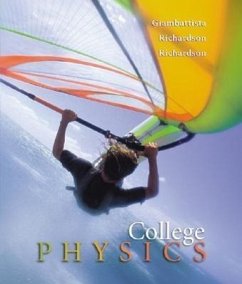
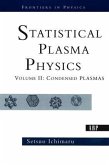
![Elements of Physics, or Natural Philosophy [electronic Resource]: Written for General Use, in Plain or Non-technical Language; 2 Elements of Physics, or Natural Philosophy [electronic Resource]: Written for General Use, in Plain or Non-technical Language; 2](https://bilder.buecher.de/produkte/66/66200/66200730m.jpg)

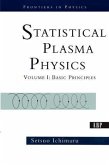
![Natural Philosophy [microform]: Part II, Being a Hand-book of Chemical Physics, or, The Physics of Heat, Light and Electricity Natural Philosophy [microform]: Part II, Being a Hand-book of Chemical Physics, or, The Physics of Heat, Light and Electricity](https://bilder.buecher.de/produkte/65/65523/65523050m.jpg)
